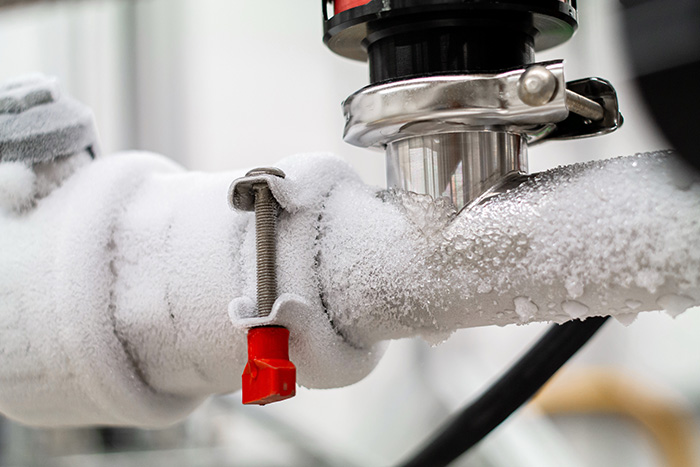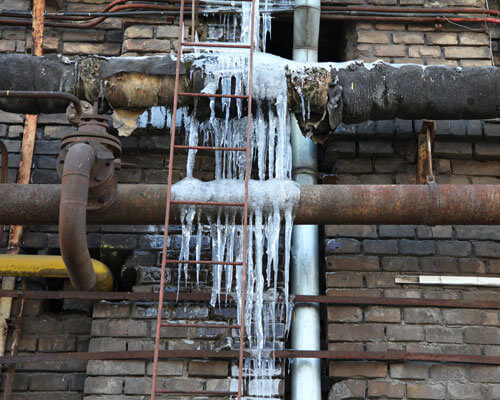What to I Do If My AC Pipe Is Frozen? - Key Tips for Restoring Functionality
What to I Do If My AC Pipe Is Frozen? - Key Tips for Restoring Functionality
Blog Article
How do you actually feel about Air Conditioner Frozen? How To Fix your Frozen AC Line?

Introduction
Uncovering that your a/c pipe is iced up can be concerning, specifically during warm summer season when you rely upon your air conditioning unit one of the most. Comprehending what to do in such a scenario is important to prevent further damage to your air conditioning system and guarantee your convenience inside your home.
Recognizing the Causes
Several aspects can contribute to the freezing of an air conditioning pipe. Understanding these causes can help you attend to the problem efficiently.
Lack of Airflow
One typical cause of a frozen air conditioning pipeline is inadequate air flow. When the air movement over the evaporator coil is limited, it can create the coil to go down below freezing temperature level, bring about ice development on the pipe.
Low Refrigerant Levels
Not enough refrigerant levels in your air conditioner system can additionally result in an icy pipeline. Reduced refrigerant degrees can trigger the pressure in the system to go down, bring about the freezing of wetness on the evaporator coil.
Winter Conditions
In colder climates, freezing temperatures outside can contribute to the freezing of a/c pipelines. If your air conditioner unit is not properly protected or if there are leaks in the ductwork, cold air can infiltrate the system, causing the pipe to ice up.
Dirty Air Filters
Dirty or clogged air filters can limit air flow in your a/c system, leading to numerous issues, including an icy pipeline. It's essential to change or clean your air filterings system on a regular basis to make sure appropriate airflow and protect against ice accumulation.
Signs of a Frozen Air Conditioner Pipe
Acknowledging the signs of a frozen a/c pipe is essential for timely activity.
Decreased Airflow
If you notice a significant decline in airflow from your vents, it could suggest a frozen pipeline.
Ice Buildup on the Pipe
Noticeable ice accumulation on the cooling agent line or the evaporator coil is a clear indication of an icy air conditioning pipeline.
Unusual Sounds from the Unit
Uncommon audios, such as hissing or bubbling, originating from your air conditioner system can indicate that there's ice existing on the pipeline.
Immediate Actions to Take
When faced with an icy AC pipe, it's necessary to act swiftly to avoid additional damage to your cooling system.
Switching off the air conditioner
The very first step is to switch off your ac system to prevent the system from running and exacerbating the concern.
Checking for Blockages
Inspect the location around the indoor device for any type of blockages that might be blocking air flow, such as furniture or drapes.
Thawing the Pipe
You can make use of gentle techniques like placing towels taken in cozy water around the frozen pipeline to help thaw it slowly.
Preventive Measures
Taking safety nets can help prevent future events of a frozen a/c pipeline.
When DIY Methods Fail
If your attempts to thaw the pipe or address other problems are not successful, it's time to contact a specialist.
Value of Hiring a Professional HVAC Technician
A qualified HVAC professional has the experience and tools necessary to identify and fix problems with your air conditioning system securely and effectively.
Regular Maintenance Checks
Arrange regular upkeep talk to a professional HVAC professional to make sure that your AC system is running successfully.
Altering Air Filters
Regularly change or cleanse your air filters to avoid air movement limitations and keep optimum performance.
Shielding Exposed Pipes
If your AC pipelines are subjected to cold temperatures, consider protecting them to stop freezing throughout cold weather.
Looking For Professional Help
If DIY approaches fall short to fix the problem or if you're unclear regarding exactly how to continue, it's best to look for assistance from a qualified HVAC professional.
Conclusion
Handling a frozen a/c pipeline can be an aggravating experience, however understanding how to react can help minimize damage and recover convenience to your home. By recognizing the causes, acknowledging the indications, and taking timely action, you can effectively address the problem and protect against future incidents.
G UP? HOW TO FIX IT?
It happens all over America. And the rest of the world probably. It’s the hottest day ever and for some darn reason your AC isn’t cooling the house. You fiddle with the thermostat to try and fix the problem. Nada. All you can do now is go outside and check the AC unit. You make your way there and find your air conditioner unit is frozen! But how?
In this post we’ll cover how you can tell that your air conditioner has frozen (other than the obvious reasons), what could have caused the freeze, and some of the things you can do about your AC freezing up. And if you have a frozen heat pump condenser, read our blog about it to learn what to do! But remember, it is always best to avoid your AC freezing up with an AC tune up. And if you are moving into a home, it's critical to get HVAC inspection so that you are aware of an AC problems before you move in.
Keep reading and you may be able to fix the frozen AC yourself. If you can’t, call an HVAC specialist. If you live in Maryland, call SuperTech HVAC for AC repair. We’ll take care of it.
How Does An Air Conditioning Unit Work?
How you probably imagine an AC works is wrong. Contrary to popular belief, an AC system does not inject cool air into a building. Instead, it removes the heat from inside and transfers it outside. Cool huh? (Pun intended).There are 4 major components among the 3 stations of an air conditioning system: the evaporator coil, the compressor, the condenser, and the refrigerant – a special chemical that links everything together through a closed loop system.
Station 1:
Warm indoor air is sucked into the return vent, through a filter, and blows over the evaporator coil. The heat is absorbed into the cold refrigerant, turning it from liquid to gas. The air, which is now cool, is blown back into the home to areas that your thermostat, i.e. you, has decided.
Station 2:
The refrigerant makes its way outside the house to the compressor, which squeezes the warm refrigerant, raising its gaseous temperature even more.
Station 3:
When the super hot vapor refrigerant reaches the condenser, the last step, the heat is expelled and absorbed into the outdoor air. The refrigerant instantly cools, which changes it from gas back to liquid form. The cold liquid refrigerant is now ready to return to station 1 and repeat the process.
Is Your AC Freezing Up? Here Are The Signs:
As you may have guessed, your air conditioner unit freezing up on a hot day is not normal.
If this happens, there's no need to panic. Often the issue can be solved with a little troubleshooting. If the AC unit is left frozen for too long however, you may find yourself with a bigger problem.
First things first, how do you know your AC is frozen?
Well, the obvious sign is the ice on your refrigerant line-set pipe. Simply check between your outdoor AC unit and your home's exterior wall to see whether your AC line frozen.
You might also have a frozen evaporator coil. This one's not as easy to check. You'll need to open a panel on the indoor unit to inspect. Don't do this unless you're handy. If you aren't, call an HVAC pro like SuperTech HVAC or you may damage something in the process.

We hope you enjoyed reading our part on Have a Frozen AC Line? Here’s How to Fix It. Thanks so much for spending some time to read through our article. Are you aware of someone else who is in to the niche? Take a moment to promote it. Thanks for your time. Come back soon.
Schedule Free Estimate Report this page